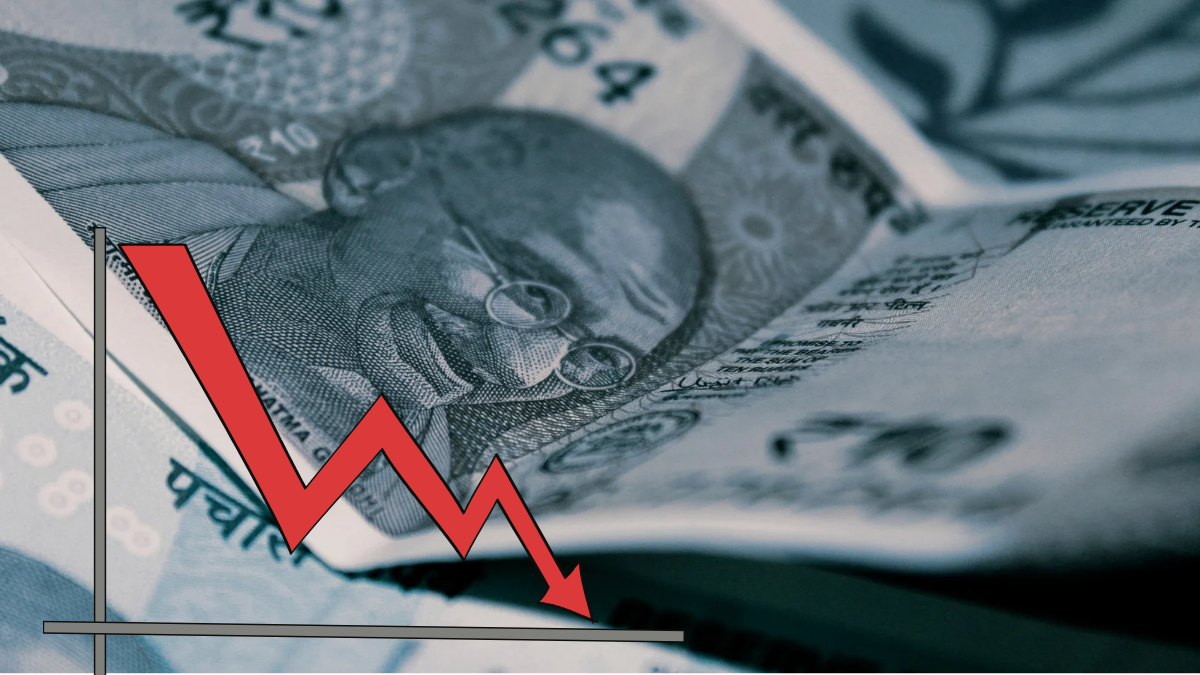The Indian rupee has fallen to ₹88.44 against the US dollar, which is the lowest level in history. This fall has created worry about rising prices, import costs, and overall economic stability.
As someone who follows financial news regularly, I can say this fall is one of the biggest shocks in recent years. The rupee has always moved up and down with global changes, but this time the fall is sharp and serious. Let us understand why this happened, how it will affect India, and what may happen in the future.
Why the Rupee Fell
The main reasons behind the rupee’s fall are:
- US Tariffs on Indian Goods – Recently, the United States put high tariffs (extra charges) on Indian exports. This reduced investor confidence in India’s trade.
- Strong Dollar Worldwide – The US dollar has become stronger because of high interest rates in America. When the dollar rises, other currencies like the rupee fall.
- High Import Demand – India imports crude oil, machinery, and other goods. To pay for these, more dollars are needed, which weakens the rupee.
- Foreign Investors Pulling Out – Many foreign investors are selling their shares and bonds in India. This reduces the supply of dollars in the market.
- Global Uncertainty – Other Asian currencies are also weak, and trade tensions have made the rupee even weaker.
Source: Reuters
How This Affects India
The fall of the rupee has both bad and mixed effects:
- Costlier Imports – India depends on imports for oil, electronics, and machinery. These will now cost more.
- Rising Prices (Inflation) – Higher import costs mean fuel, transport, and many daily goods may become expensive.
- Limited Benefit for Exports – Normally, a weak rupee helps exporters as their goods become cheaper abroad. But US tariffs reduce this benefit.
- Pressure on Forex Reserves – The Reserve Bank of India (RBI) may have to use foreign exchange reserves to control the fall.
- Impact on Businesses – Companies that buy raw materials from outside India will face higher costs.
What Experts Are Saying
Market experts believe the rupee will stay around ₹88 to ₹89 per dollar in the near future. Unless global conditions improve or foreign money flows back into India, the rupee may remain under pressure.
The Reserve Bank of India has been trying to reduce panic in the market. It is not fixing the rupee at one level but is controlling sudden big changes.
Global factors like US inflation data, Federal Reserve policies, and India-US trade talks will play a big role in deciding where the rupee goes next.
What Could Happen Next
The future of the rupee depends on many things:
- If oil prices go up, the rupee could weaken more.
- If India and the US improve trade relations, the rupee may get support.
- If foreign investors return, it will bring more dollars and strengthen the rupee.
- If RBI raises interest rates, it may help the rupee, but it could also slow down economic growth.
For now, the situation remains uncertain.
FAQs
1. Why did the rupee fall so much?
Because of strong demand for dollars, US tariffs, and foreign investors leaving India.
2. Is a weak rupee always bad?
Not always. It helps exporters by making their goods cheaper. But this time, tariffs are blocking that benefit.
3. Will the rupee fall below 90?
Experts say it will stay around 88–89 for now, but if oil prices rise or trade tensions worsen, it could cross 90.
4. What is RBI doing?
The Reserve Bank of India is using foreign reserves and market tools to control sudden big falls in the rupee.
5. How does this affect common people?
It makes fuel, transport, electronics, and foreign education costlier. Daily life may get more expensive.
Conclusion
The fall of the Indian rupee to 88.44 per dollar is a serious event for the economy. It shows how global trade, US tariffs, and foreign investor actions affect our currency.
For ordinary people, this means rising costs and higher inflation. For businesses, it means more challenges with imports. The coming weeks will be very important. How the government and RBI handle the situation will decide if the rupee stabilizes or falls further.










